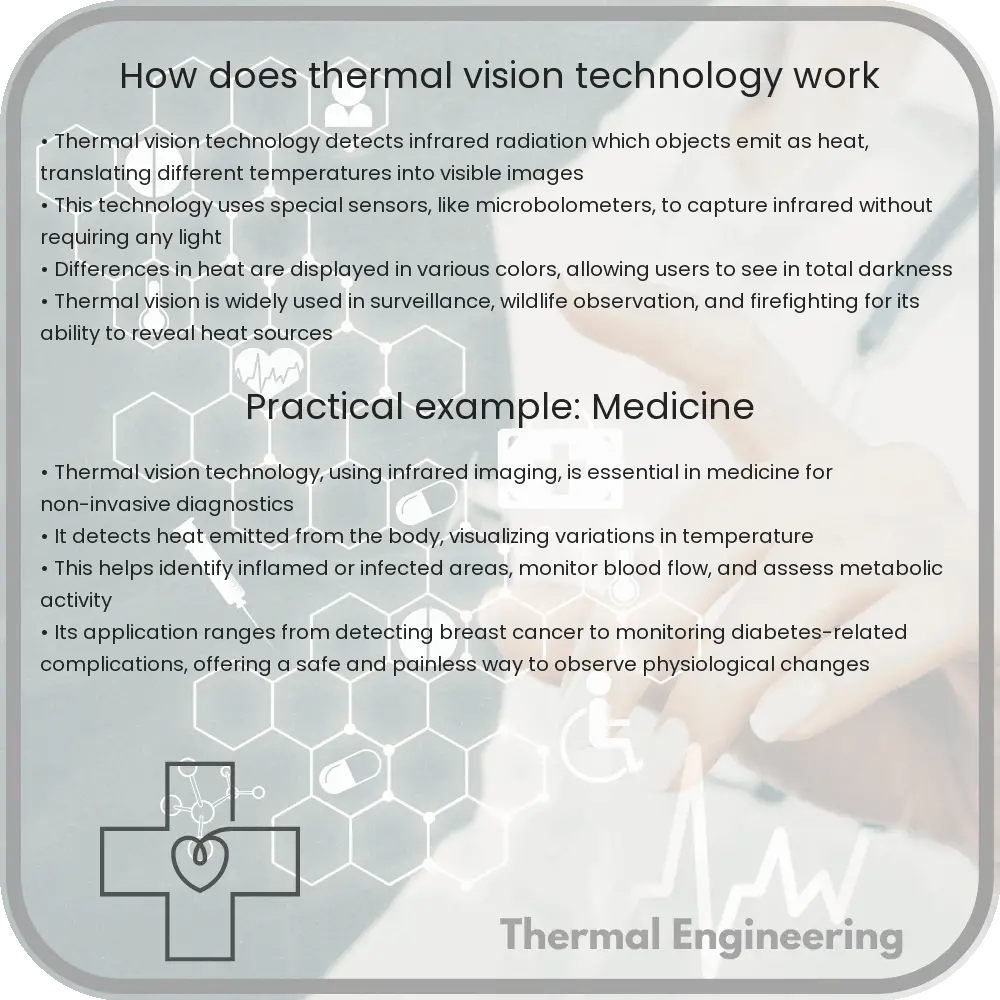Learn about thermal vision technology, its workings, applications, and future in enhancing human perception and capabilities across various fields.

Understanding Thermal Vision Technology
Thermal vision technology, also known as thermography or infrared imaging, is a fascinating engineering breakthrough that allows humans to see the heat emitted by objects. It is widely used in various fields such as security, navigation, surveillance, firefighting, and healthcare. But how exactly does this technology work? Let’s explore the principles and components that enable thermal vision.
The Science Behind Thermal Vision
Every object emits infrared energy as heat, and the amount of this energy is directly associated with its temperature. Thermal vision cameras detect this infrared radiation and convert it into an image that we can see. This process involves several key steps and components:
- Infrared Sensor: At the heart of any thermal imaging device is an infrared sensor. This sensor is capable of detecting infrared radiation (heat) emitted from various objects.
- Infrared Detector Elements: The infrared sensor contains thousands of detector elements arranged in a grid. Each element reacts to the infrared radiation striking it and converts it into an electrical signal.
- Signal Processing: The electrical signals generated by the detector elements are processed using specialized algorithms to form a digital image. This image represents varying heat levels of the scene in different colors.
The images produced by thermal cameras are often color-coded. The common palette used assigns warmer objects with colors like reds and yellows, while cooler objects appear in greens and blues. These colors are not real but are rather symbolic to help humans better visualize variations in temperature.
Applications of Thermal Vision Technology
Thermal imaging technology has a wide array of applications across many sectors:
- Security and Surveillance: Thermal cameras can capture images in complete darkness and through smoke, fog, or haze, making them ideal for security applications.
- Firefighting: Firefighters use thermal imaging cameras to see through smoke and monitor the heat of fire scenes, helping them locate hotspots and individuals trapped in fires.
- Maintenance and Diagnostics: In engineering contexts, thermal cameras can identify hot spots or thermal anomalies in machinery and electrical circuits, aiding in preventive maintenance and troubleshooting.
- Wildlife Research: Scientists and researchers use thermal cameras to study animals at night or to track them in their natural habitats without disturbance.
- Medical Diagnostics: In healthcare, thermal imaging is used to detect body heat patterns that may signify circulatory issues, muscle injuries, or other medical conditions.
The Future of Thermal Imaging
With ongoing advancements in sensor technology, data processing, and artificial intelligence, the scope and efficiency of thermal vision technology continue to expand. Future developments are likely to make these devices even more sensitive, affordable, and integrated into everyday technology, expanding their applications across new fields and improving their efficacy in existing ones.
Thermal vision technology epitomizes the intersection of physics and engineering, turning what was once a phenomenon of nature—the emission of infrared radiation—into a powerful tool for enhancing human perception and capability.